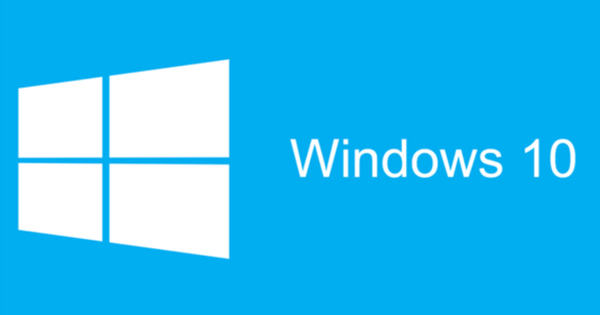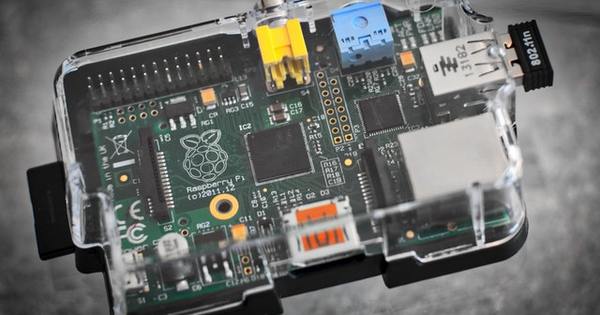The naming of Wi-Fi technologies has left something to be desired since the beginning of Wi-Fi. Adding seemingly arbitrary suffixes like b, g, n or ac to the 802.11 Wi-Fi standard was difficult for even tech enthusiasts to follow. That's why the Wi-Fi Alliance, the organization internationally responsible for managing all these wireless standards, decided to simplify all designations at the end of 2018. For example, the current 802.11ac standard simply changed to WiFi 5. But this year the next generation of WiFi will also start its broad rollout: WiFi 6. We explain what this means and share our first test results.
In a nutshell, Wi-Fi 6 (aka 802.11ax) should bring us faster peak speeds, greater total data capacity, lower power consumption, and most importantly, better performance in environments with many different devices. Higher peak speeds and greater overall capacity can be expected with each new generation of Wi-Fi. Lower power consumption thanks to optimizations is nice because today we mainly use WiFi with mobile devices such as telephones, tablets and laptops. After all, even with the fast charging technologies that are now on the market, you would rather have your mobile devices last as long as possible on a single battery charge.
However, the strength of this new generation of Wi-Fi lies in its improved performance in multi-device environments. Where a few years ago we usually had one, sometimes two wireless devices, today that has increased to half a dozen or more. Smartphones and laptops are the well-known data guzzlers, but nowadays our televisions, thermostats, speakers and doorbells are often also connected to our network.
And just that, dealing with many devices at once, is something Wi-Fi has traditionally been terribly weak at. One slow device in your network could cause congestion or minor hiccups in the traffic of faster wireless devices. And unfortunately, the relatively high (theoretical) peak speeds of Wi-Fi 5 (or 802.11ac) and the various techniques to mitigate this problem (including 'airtime fairness') offered only limited relief.

OFDMA
The WiFi6 standard uses a technique called OFDMA, in full 'orthogonal frequency-division multiple access'. OFDMA is a technique that you probably have never heard of, but that you do use. Have you ever wondered how it is possible that hundreds of people in the city can use 4G internet just fine, but that two active teenagers can shut down your Wi-Fi network? It is precisely this technique that is already used in our mobile LTE/4G connections, where thanks to OFDMA it is possible with a limited number of 4G antennas to provide large groups of users with a smooth mobile Internet connection.
OFDMA actually cuts the existing data streams or streams into many small pieces that can be distributed much more efficiently between all connected devices and allowing data to be sent to different devices at the same time. With WiFi 5, data could only be sent to one device at a time. Think of a WiFi5 router as a small train station with one track where one train takes turns departing to one destination. In that comparison, a WiFi6 router by OFDMA is like a large multi-track train station à la Utrecht Central where several trains continuously depart to multiple destinations.
Backwards Compatible
Fortunately, because WiFi 6 builds on the existing 2.4 and 5 GHz band, there is full backwards compatibility. The Wi-Fi Alliance is aware that incompatibility between clients and networks would be a huge problem in our day-to-day networking experience. It is therefore no problem at all to connect devices that only support WiFi 5 to a modern WiFi 6 router or access point, just like it is no problem to connect your WiFi 6 device to an older type of network. Of course you are limited to the speeds of the previous generation.
Too good to be true?
Unfortunately, the speeds that WiFi delivers in theory have been too good to be true for years. We remember the disappointed reactions of users who did not reach the theoretical 150 Mbit/s with their then new 802.11n network (now Wi-Fi 4). Some skepticism with regard to the great marketing promises is therefore certainly in order. So let's take a look at what you need to take advantage of Wi-Fi 6 in practice.
To simply take advantage of the faster speeds, you must have a WiFi6 router and a WiFi6 client. However, to take full advantage of the great promise of Wi-Fi 6 and OFDMA, all of our most active data guzzlers need to use Wi-Fi 6 radios, and we seem to be running into a major hurdle.
What's for sale?
Wifi6 routers have been for sale for a while, both ASUS and Netgear have models on the shelves, ASUS has been around since the summer of 2018. However, the amount of clients with WiFi 6 is lagging a lot. On the computer side, that's not too bad. Since May of this year it has been possible to buy the Intel AX200 card yourself with which you can provide your current laptop with WiFi 6, provided that you are not afraid to open your laptop. At around 25 euros, the price is very reasonable.
USB adapters are still pending, but in most new high-end laptops, WiFi 6 seems to be becoming standard. This is partly due to the fact that the price of those WiFi6 chips is not much higher than previous generation WiFi5 chips. So taking advantage of faster Wi-Fi speeds is no problem today.
On the side of smartphones, tablets and IoT devices, the integration of Wi-Fi 6 is only moderately smooth. Last fall, Samsung introduced the Galaxy S10 with WiFi 6, but almost a year later, there are hardly any other WiFi6 phones on the market. It also remains to be seen whether Apple will equip its products with WiFi 6 to be launched in 2019. And we have not yet seen IoT equipment with WiFi 6. Without Wi-Fi 6's wider support, two major advantages (better handling of large numbers of devices and lower energy consumption) remain mainly theoretical and something we simply can't test properly at the moment.

Ready for Wi-Fi 6?
If you are about to buy a new laptop, we recommend making sure that it has WiFi 6. Pay particular attention to the terms Wi-Fi 6, 802.11ax, or the presence of the Intel AX200 or the Killer AX1650 chip. Many modern laptops are glued shut these days, which makes upgrading yourself seriously difficult, so it's definitely worth making sure it's already there when you buy it.
The first practical experiences
We were able to test three WiFi6 routers and one AX mesh kit in our lab: the ASUS RT-AX88U, ASUS ROG Rapture GT-AX11000, Netgear Nighthawk AX12 and the ASUS AX6100 mesh kit that we also tested in our comparison test. tested elsewhere in this issue. To push the routers to the limit, we used two Dell XPS 15 laptops, (one with the Intel AX200, the other with the Killer AX1650), one desktop PC with the Intel AX200 and one Samsung Galaxy S10+.
In practice, the peak speeds are largely dependent on your clients. For example, the Galaxy S10+ does not use 160MHz channels, but a maximum of 80MHz. Also, we didn't get the 160MHz channels working on the AX6100 mesh kit. At that time, we see maximum speeds of about 875 Mbit/s on the laptops and desktop, and a few tens of Megabits lower on the S10+, which unfortunately can be measured less accurately than a Windows machine. By comparison, that is still considerably faster than the 500 to 600 Mbit/s that you can expect on a WiFi5 network.
On the ASUS GT-AX11000 and the Netgear AX12 we managed to use the wider 160MHz channels and for the first time we saw wireless speeds that are higher than the gigabit ports that most routers have on board. Peaks above 1500 Mbit/s and stable long-term file transfers from 1200 to 1300 Mbit/s from our wired workstation to one WiFi6 laptop. So that's faster speeds than is possible on a wired basis on the typical gigabit networks that most people have at home. If we combine the three PCs, we will even exceed 2 Gbit/s!

Ifs and buts
The data has to go somewhere, and the only way to take advantage of that faster-than-gigabit performance from start to finish is if both your router and the device the data goes to have a multi-gigabit network connection. Both the GT-AX11000 and the AX12 routers therefore have a 2.5 Gbit/s port on board, just like our connected workstation. However, such connections are still rare and only available on expensive workstations and motherboards. If you want to upgrade your entire network to multi-gigabit, you will have to spend at least a few hundred euros on switches and suitable cables.
And then you're not there yet, because such speeds are also higher than a typical hard drive can handle. Full SSD storage is therefore desirable. The combined costs of a network that is fast enough and possibly having to buy additional SSDs can run up to a few thousand euros. We also lost a few hours tweaking settings to get the performance reproducible. We think it will be a while before Wi-Fi 6 and multi-gigabit networks really become standard.
Yet!
Despite this, 2019 is the year that Wi-Fi 6 is no longer theoretical, but demonstrably manages to achieve dizzying performance in practice. That we've reached the point where our wireless network is no longer the limitation, but we've had to upgrade our wired networks and wired workstations to keep up with Wi-Fi6 clients is telling.
And latency?
High speeds are one thing, latency (delay) and stability another. Although we see an unprecedented low latency in our WiFi6 networks, the delay is still about 3-4 milliseconds more compared to a network cable (with a latency of less than a millisecond). When we set up several fast WiFi6 streams, they occasionally wanted to have a hiccup of a few tens of milliseconds, something that we cannot yet overcome with a QoS setting (quality of service). Whether WiFi 6 can completely replace the cable for people who really depend on every millisecond, think of professional gamers, is therefore still very much the question.
Conclusion
Some of the real gains of Wi-Fi 6 just can't be demonstrated at this point. In addition, taking advantage of the absurd top speeds requires such a large investment for the time being that it is not feasible for most consumers. Yet the question is not whether Wi-Fi 6 will become common, but when it will. It also took a while before we really benefited en masse from the faster 5GHz band that WiFi 4 brought us, but it is now indispensable.
If you want to take advantage today, you can: the hardware is for sale and is impressive. But even if you think a WiFi6 router is still a bit expensive, it is probably worth paying attention to WiFi6 support when you are about to buy a new laptop or phone, then you are already (partly ) ready for the future.

